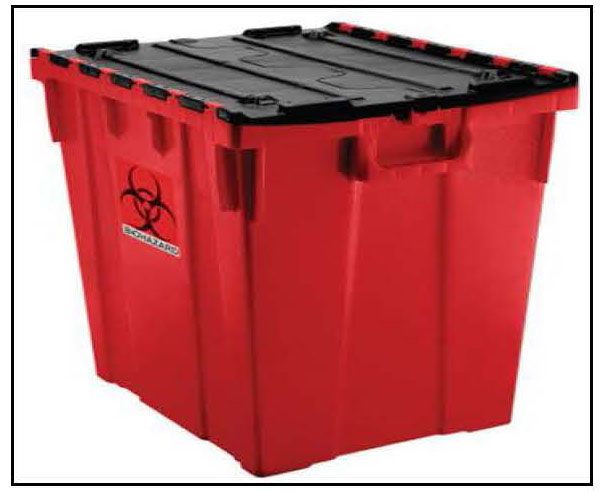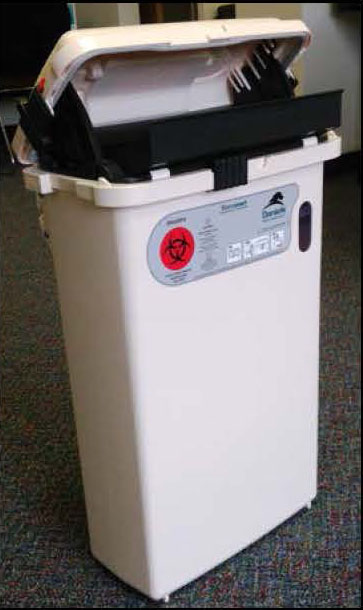Biological Waste Disposal
Biological Waste Disposal

Biohazard Bins
Do not overfill bins!
Max weight = 35 to 40 lbs.
- Waste should be collected and stored in a leak proof, puncture resistant, secondary container (labeled garbage can, autoclavable plastic bin, or stainless steel pot) with a lid.
- Full biohazard waste bags must be placed into the red bins provided by OEHS, and the lid closed.
- When the OEHS container is full, tie the liner bag and submit an online pick-up request.
SHARPS
Place containers close to where sharps are used. Don't overfill
containers. NEVER RECAP NEEDLES!
SHARPS include:
- Needles and syringes
- Scalpels and lancets
- Razor and microtome blades
- IV tubing with needles attached.
- Contaminated glass Pasteur pipettes
- Any other sharp, metal lab waste that could puncture a bag.
Uncontaminated/decontaminated lab glass and plastic
Treat contaminated glass/plastic with appropriate chemical disinfectant, then dispose of these materials in sturdy cardboard boxes. Tape boxes closed and label "glass waste" for collection by custodial staff. DO NOT dispose sharps, biohazards, or chemicals in cardboard boxes or in the regular trash!
Printable pdf: Biological Waste Disposal Flyer
Please see the Biological Waste Disposal Guide for further guidance on how to dispose of common laboratory supplies.